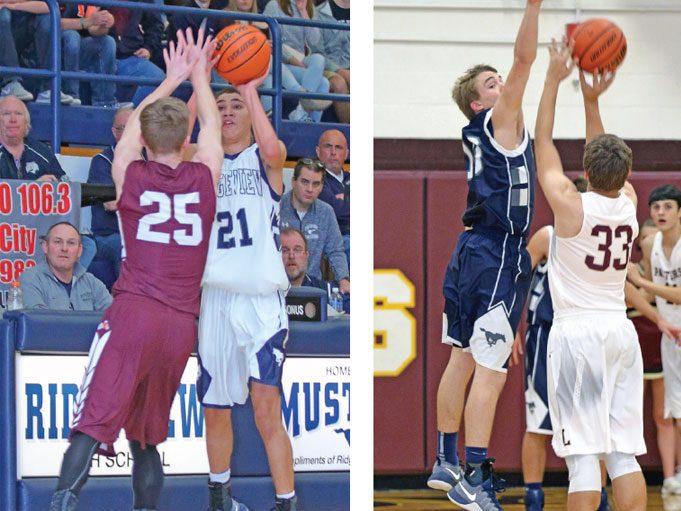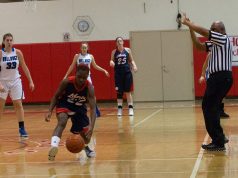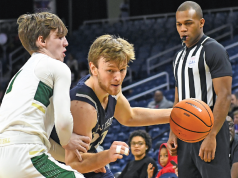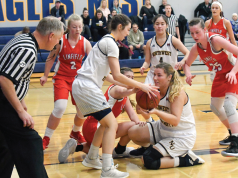With the game transitioning more and more to outside jump shots and three-point attempts, officials need to focus on three separate but similar areas:
- Monitoring defensive players as they close hard on a jump shooter.
- Officiating the screen in your primary area to free the three-point shooter.
- Watching for illegal contact while a defensive player contests a jump shot.
Understanding those differences in coverage earlier helps increase play-calling percentages. Officials must also be aware of long rebounds from missed jump shots and position themselves accordingly.
As the number of long-range attempts are increasing, officials need to adjust position in covering the three-point shot as this is critical to be able to “referee the defender,” or risk being right behind the offensive player. It is crucial to position-adjust earlier, before the ball arrives in the shooter’s hand. When the adjustment is on the catch, the official is late and at that point the official can only mark a three-point shot. If you make your position-adjust earlier, you can identify if there is a screening situation in your primary area and how hard the defender is closing. If you make a correct position-adjust, you can then judge the legality of the screen and also referee what that defender is doing.
If the defender is closing hard, you must stay with the defender the whole time, while also staying with the offensive player. You must realize that when the defender is closing hard, the shooter is probably up in the air already — they are closing hard because they are late. The defender has a tendency of going right into the offensive player’s body as they are coming down and the shooter is not allowed to land.
If you do not make your position-adjust, then you have no open angle to correctly judge the play and end up guessing. Some people say, “Well, if I did not do a position-adjust to referee the defender who is closing fast, I am for sure going to see that they got undercut because they will both be on the floor.” Not necessarily, as you would not be able to see, for example, if the offensive player makes an unnatural move and kicks his or her foot out to try to draw a foul.
You must be able to officiate the defensive player. If you understand and practice that, you have a chance to get the rest of the story. You will be able to officiate the offense and the defense all the way up and down and bring that player legally to the floor.
Finishing the play
It takes time to make the change in coverage of three-point attempts. A lot happens to the ball while the covering official is ensuring the shooter gets back to the floor. After the ball is shot and is on its way to the basket, fouls occur during rebounding situations in one of three areas:
- While the ball is on its way to the basket.
- As the ball is coming off the ring.
- After the rebound is secured.
While the ball heads to the basket, players are starting to move, hold, get position, etc.
As the covering official, you are staying with the shooter and the defender. The other two officials must extend their coverage until the covering official is able to pick up the rebounding action.
With an increase in three-point shots, officials have to referee the defender, watch the screen in your primary area, bring the offensive player up and down, and watch how it impacts rebounding coverage.
Use video in your pregame meetings to review coverage on three-point shooters.
What's Your Call? Leave a Comment:
Note: This article is archival in nature. Rules, interpretations, mechanics, philosophies and other information may or may not be correct for the current year.
This article is the copyright of ©Referee Enterprises, Inc., and may not be republished in whole or in part online, in print or in any capacity without expressed written permission from Referee. The article is made available for educational use by individuals.


















